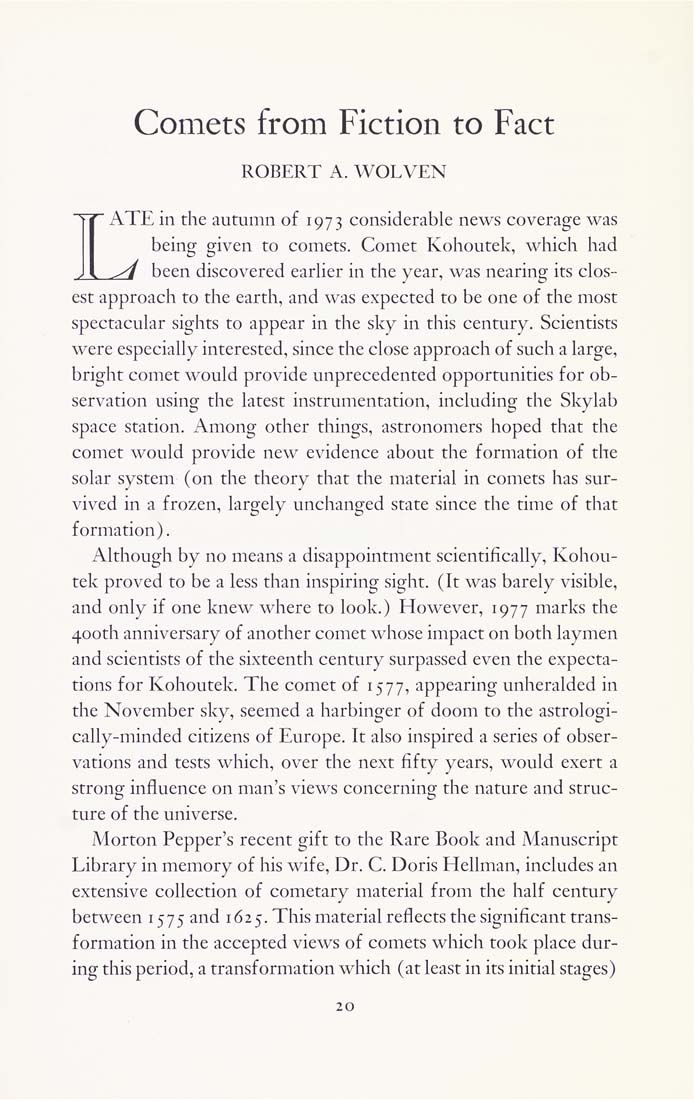Columbia Library columns (v.26(1976Nov-1977May))
(New York : Friends of the Columbia Libraries. )
|
||
|
|
|
|
| v.26,no.3(1977:May): Page 20 |

Comets from Fiction to Fact ROBERT A. WOLVEN ATE in the autumn of 1973 considerable news coverage was being given to comets. Comet Kohoutek, which had been discovered earlier in the year, was nearing its clos¬ est approach to the earth, and was expected to be one of the most spectacular sights to appear in the sky in this century. Scientists were especially interested, since the close approach of such a large, bright comet would provide unprecedented opportunities for ob¬ servation using the latest instrumentation, including the Skylab space station. Among other things, astronomers hoped that the comet would provide new evidence about the formation of the solar system (on the theory that the material in comets has sur¬ vived in a frozen, largely unchanged state since the time of that formation). Although by no means a disappointment scientifically, Kohou¬ tek proved to be a less than inspiring sight. (It was barely visible, and only if one knew where to look.) However, 1977 marks the 400th anniversary of another comet whose impact on both laymen and scientists of the sixteenth century surpassed even the expecta¬ tions for Kohoutek. The comet of 1577, appearing unheralded in the November sky, seemed a harbinger of doom to the astrologi- cally-minded citizens of Europe. It also inspired a series of obser¬ vations and tests which, over the next fifty years, would exert a strong influence on man's views concerning the nature and struc¬ ture of the universe. Morton Pepper's recent gift to the Rare Book and Manuscript Library in memory of his wife. Dr. C. Doris Hellman, includes an extensive collection of cometary material from the half century between 1575 and 1625.This material reflects thesignificant trans¬ formation in the accepted views of comets which took place dur¬ ing this period, a transformation which (at least in its initial stages) |
| v.26,no.3(1977:May): Page 20 |







